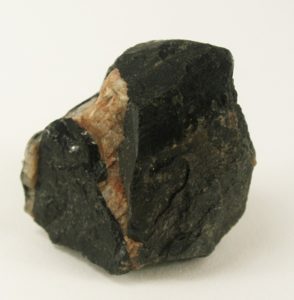
#mineralmonday: your weekly* dose of obscure mineralogy, every Monday** [*not guaranteed; **or possibly Tuesday-Sunday]
What is it? Gadolinite-(Y),Y2FeBe2Si2O10
What’s it made of?: It’s a silicate (a mineral containing silicon (Si) and oxygen (O)) also containing yttrium (Y), beryllium (Be) and iron (Fe). Yttrium is a rare earth element – somewhat of a misnomer as in general they aren’t really that rare.
Is it dangerous? It can contain some uranium and thorium, both of which can emit radiation when they decay to other elements. Probably more dangerous if thrown – it’s pretty dense (about 4x heavier than its equivalent volume of water)
Is it pretty? Not really, unless you like greasy looking, opaque, blackish lumps. No judgement.
What’s it named after? Named after a ‘who’ not a ‘what’ – it was named for the Finnish chemist Johan Gadolin, who discovered yttrium. He also had the element gadolinium named after him.
Wait, so why didn’t they name yttrium after him? Well, ten years earlier a sample of an unknown rock had been found at Ytterby in Sweden, and named for the village, the name more or less stuck when Mr Gadolin identified what it was.
Do any non-Scandinavian countries get to be involved? Not really – much like the Eurovision song contest, the Scandinavians had a near complete monopoly on the early research into the rare-earth elements.
We are getting sidetracked here, why should we care about this mineral? The whole group of rare earth elements are becoming really important these days – we need them for loads of modern technological uses, but some of the most important are rechargeable batteries, really strong magnets, etc. The looming threat of a trade war between the USA and China, who currently hold the vast majority of the world’s supply of these elements, will only make people more interested in minerals that contain them.
Do you have a favourite obscure mineral? Want to write about it? Contact us and give it a go!



Nathan Carlisle
Hello Mike. I’m Nathan. I enjoyed your article on gadolinite y. I have no formal education in petrology or any field of geology, but I’m an enthusiastic mineral digger/collector, and my favorite location by far is Malawi, where the REEs are in no short supply. I have a geologist friend in Maine, All Falster, and he too is a fan. Recently I spotted odd crystals on a microcline piece, which Al tested, and they turned out be hingganite y. It’s great fun for someone like me. And there is so much zircon there, and I suspect a little more xenotime than can be easily identified. So far as I can tell the crystal habits of zircon and xenotime vary only a little, and zircon occurs there in a myriad of colors so color is of no help.
I searched gadolinite because possibly I’ve found a few crystals on a sizable Malawi cluster- microcline, zircon, aegirine, and quartz in a kind of tessin habit. Not a perfect piece, but a wonderful peg specimen. Do you have any familiarity with gadolinite? Would you take a look at some pics? I can find only one habit for gadolinite. But I’ve found pics of another that are very similar to what I have here.
Thank you very much for your time and the neat article.
Nathan